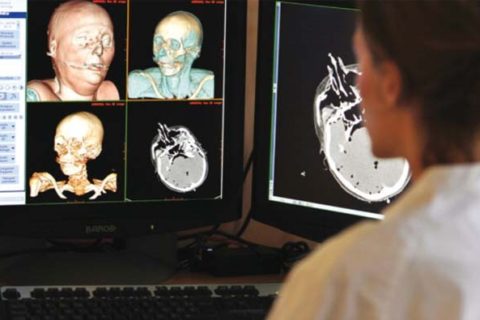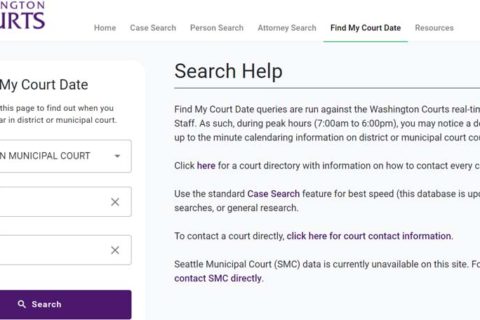Similar to the other agencies that provide forensic science services to law enforcement, a government agency that is under the Home Department of the provincial Government of Punjab or Pakistan called Punjabi Forensic Science Agency has a number of rules. Instead of rules, these are known as guidelines. These guidelines are for evidence collection, preservation, and transportation. What are the Punjab Forensic Science Agency rules or guidelines? Find out some of what you need to know below!

Read also: How to Apply Online to PFSA
Audio-Visual Analysis
- Every single item needs to be packaged in a container of suitable size to prevent contamination or deleterious change.
- Before getting packaged, evidence should be properly documented, labeled, marked, photographed, and inventoried.
- To prevent static electricity, package all digital evidence in anti-static packaging. For packaging of digital evidence, use only paper bags and envelopes, cardboard boxes and antistatic containers.
- Collect the video evidence in its original format as it is recorded on the recording device.
- To avoid getting bent, scratched or deformed, evidence should be packaged in a manner. Do not use plastic materials for packaging.
- Collect every power supply, cable, and adapter for all electronic devices seized.
- Use shock resistance packaging material to avoid physical damage to any components of the device(s).
- Label every container used to package digital evidence clearly and properly.
- Keep the packaging areas away from ultraviolet light as it may accelerate the degradation process.
- Give the packaging environment a mild temperature and humidity. Avoid the extreme environment as it can lead to spoliation of potential evidence.
Computer Forensic
- Pack all items in suitable sized containers to prevent contamination or deleterious change.
- Secure main system units and or notebooks in an appropriate container to avoid tempering or spoliation of the potential digital evidence that could reside in it.
- Store the collected digital device(s) in a secure environment or location that is not subject to extreme temperature or humidity. Do not expose it to magnetic fields, dust, vibration, moisture or any other environmental elements that may damage it.
- Isolate mobile devices or smart phones from the network using Network Isolation Techniques, that is Faraday Isolation bags, Radio Frequency shielding material, anti-static packing and aluminum foils.
- Pack all items in containers that can be sealed.
- Pack and secure computers and electronic devices during transportation to prevent damage from shock and vibration.
- Do not keep digital evidence in a vehicle for prolonged periods of time because heat, cold, and humidity can damage or destroy digital evidence.
Firearms and Tool Marks
- Pack every evidence exhibit separately.
- Pack every firearm in unloaded condition with safety on.
- Pack every cartridge case and bullet separately.
- Pack evidence submitted for Gun Shot Residue or GSR in a hard box instead of a cloth bag or paper envelope.
- Mark the area containing obliteration clearly if there is more than one location of obliteration.
- Do not wash or clean vehicles at all prior to examination for trajectory analysis. Cover suspended bullet holes with white paper.
- Intact seals in the docket.
Latent Finger Prints
- While dealing with latent fingerprint evidence, always use Personal Protective Equipment or PPE, including disposable gloves, a facemask, and so on.
- Photograph the latent prints if at a crime scene they appear to be visible or if the lifting process may pose unique challenges.
- Use fingerprint powders, especially black powder, because it produces the best ridge detail and is easier to compare.
- Process non-porous items at the crime scene and then process latent print(s) photographed or lifted and submit it to PFSA for further enhancement and comparison.
- Submit the original questioned document for Fingerprint Examination.
Forensic Pathology
- Fix the tissues in formalin solution, which is formaldehyde gas dissolved in water.
- Add fixative even in exhumation cases.
- Add a few drops of 10% formalin to the specimen if cytological examination of fluids, secretions and blood is required.
- Mention the brief medical history of the decrease clearly in the forwarding letter.
- Close the lid tightly.
- Sign the evidence at regular intervals to put half part of the signature on the evidence tap and the other one on the container.
- Put stamps on the evidence tape in a similar manner.
- Place the sealed container or jar in a plastic bag and tie the knot.
- Mention some information such as name of the deceased, PMR or case number, sample details, date and time of sampling, and collector’s name, designation and signature on the label on the sample jars.
Polygraph Examination
- Include some documents for polygraph examination, such as a copy of CNIC of suspect or attested photograph of suspect, copy of FIR, and request letter for polygraph examination.
- Suspect should not know about the polygraph examination.
- Suspect should have had proper breakfast and enough sleep.
- Suspect should not have used any illegal drugs for at least 24 hours.
- Suspect should not been tortured for the last 24 hours.
- Suspect should not have physical illness or any injury.
- Wash the hands of the suspect.
- For the investigation officer, they should prepare the case fully before briefing.
Questioned Documents
- Use a paper envelope of appropriate size to package the questioned document evidence and do not fold it.
- Before packaging the questioned document evidence in it, write the important information on the envelope.
- The envelopes that are used to package the evidence should be the ones that can protect them from wear and tear and contamination.
- Attach and document all the important documents required for the case.
- Protect the case documents from severe environmental conditions such as moisture and fire.
- Pack the questioned evidence in a suitable hardboard box or container if they consist of charred or water-soaked documents. Make sure to pack them with a cotton cushion to protect them from further destruction.
Trace Chemistry
- Label the container with at least the case number, exhibit number, date and initials of the concerned person, item number, and item description.
- To gently grasp the evidence item and get rid of it off the substrate, use forceps or other suitable tools.
- Package and seal the evidence item in a suitable container to prevent contamination or deleterious change.
Toxicology
- Submit the sample in preservative.
- Make sure to collect toxicology samples as soon as possible after the offense, in death cases before embalming where applicable.
- Collect all samples in separate containers.
- Pack every specimen in a well-sealed, leak-proof container.
- Use disposable hard plastic or glass tubes for most specimens.
- Seal the blood tubes and keep them cold but not freeze.
- Do not expose specimens to hot temperatures.
- For a valid chain of custody, label all items of evidence with some information such as name of victim or suspect, case number, type of specimen, site of collection, amount of specimen, time and date of collection, and name(s) of the medical examiner or person collecting the sample.
Narcotics
- Pack evidence in a sealed, neat plastic bag, cloth wrap, paper envelope or box.
- Pack liquid samples in a leak-proof sealed bottle.
- Pack all samples separately.
- Place wet plants in a paper envelope or paper fold to prevent deterioration.
- Submit FIR copy, Analysis Request Letter and Road Certificate and so on with the evidence.
- Submit evidence to the Investigation Officer or by someone whose name is written on the Road Certificate as submitting person.
DNA & Serology
- To protect the individual and the evidence from cross-contamination, use the appropriate use of personal protective equipment or PPE, including disposable gloves, disposable overalls, laboratory coats, masks, and eye protection.
- Use PPE in every situation in which there is a possibility of exposure to blood or infectious diseases. Wear gloves and protective clothing when conducting legal examinations, autopsy or collection of biological evidence, handling soiled materials or equipment, and cleaning up spills of biological hazardous materials. Wear face protectors, such as splash goggles, against items that may splash, splatter, or spray.
- Get rid of PPE when it becomes contaminated and before leaving the work area. Place the used protective clothing and equipment in designated areas for storage, decontamination, and disposal.
- Cover the area containing blood or other potentially infectious material with paper towels or rags, covered with a disinfectant solution when wet material is spilled. Then, leave it for at least 10 minutes and remove it. After that, place it in a waste disposal bag designated for biohazardous material.
For complete rules or guidelines of Punjab Forensic Science Agency, feel free to visit the official website of Punjab Forensic Science Agency.

A bookworm and researcher especially related to law and citizenship education. I spend time every day in front of the internet and the campus library.





